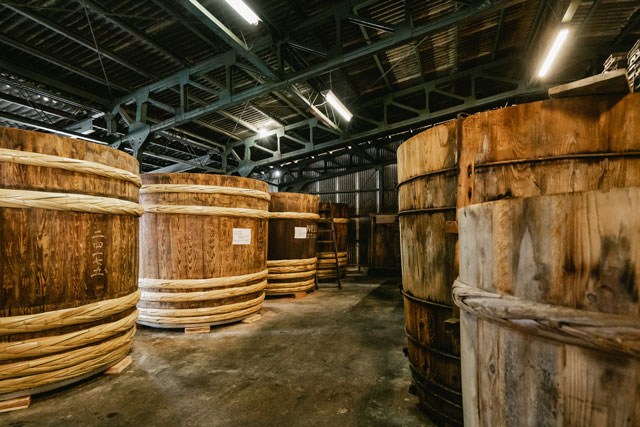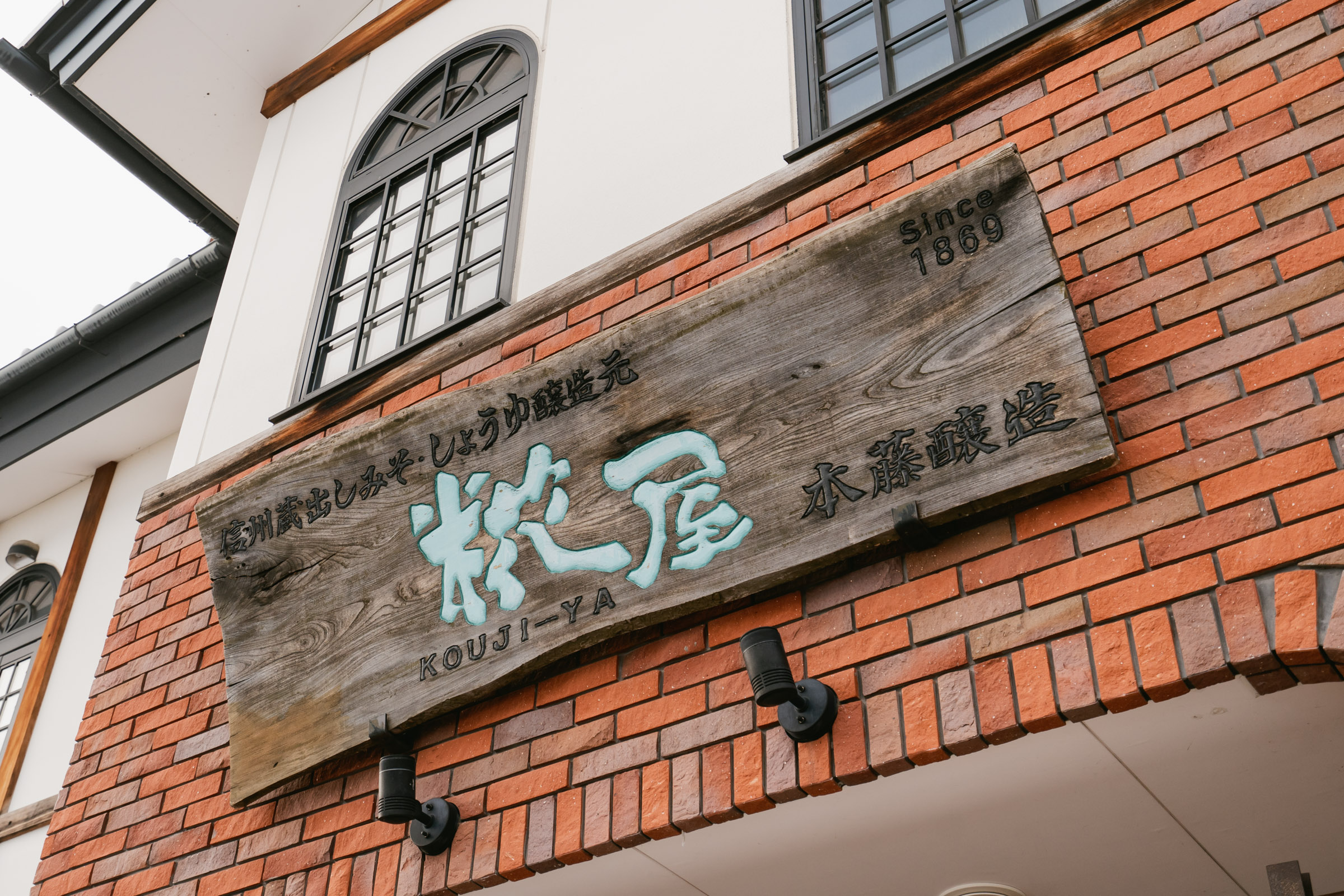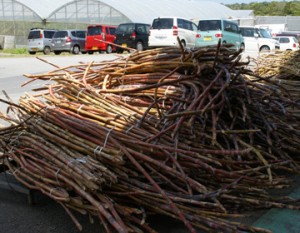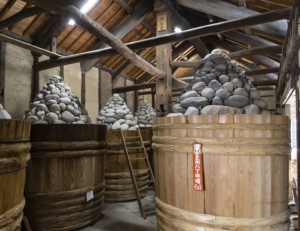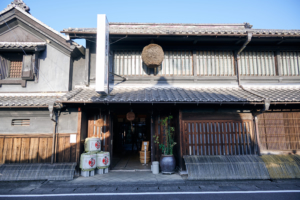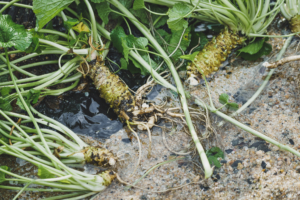Natural brewed miso made in wooden vats
Did you know that Shinshu miso accounts for more than 50% of all miso produced in Japan?
In Nagano Prefecture, the culture of preserved food has long been developed as a way to survive the long, harsh winters, but why has only Shinshu miso become so popular? One of the factors is the change in the industries that supported the prefecture.
Nagano Prefecture has an oligo-rainy climate with very little annual precipitation, and the cultivation of mulberry trees, which feed silkworms, was highly suitable for raising silkworms, and the silk industry flourished from the early Meiji period. However, the silk industry declined over time. The inland climate, with its low humidity and large daily and annual temperature range, was also suitable for growing soybeans and rice, and gradually more and more companies switched their business to miso production, which uses these crops as its main ingredient.
The snowy country has a deep-rooted culture of making miso by hand, and many of the factories had already been making miso for their own consumption by their own employees.
Later, as a national policy during the war, Nagano Prefecture was responsible for the production of miso to be shipped to the Kanto region. In doing so, it was able to meet supply demand, and its sales channels expanded dramatically. In this way, Nagano Prefecture became a major producer of miso in the postwar period, and today the top three miso producers in Japan are dominated by major miso manufacturers headquartered in the prefecture.
The company with the shaved head and the famous phrase “Omiso-nara,” both of which have made Shinshu miso their mainstay, have been carrying the weight of Japan’s dining tables. Of course, Nagano Prefecture leads the world in the number of miso breweries. Among them, the city of Suzaka, located in the north of Nagano Prefecture, is known as one of the best miso towns in the prefecture, with many small but unique miso breweries that have been around for a long time. One of them, Kojiya Hondo Jyozoppo, is a long-established miso brewery that was founded in 1869 as a specialty malt store, just as its name suggests. Koji plays an important role in miso making, as is often said, “one cook, two malt, and three preparation. Hiroshi Hondo, the fourth-generation owner, is more particular than others about the quality of malt, which is the root of the store.
Mr. Hondo uses a type of malt called “Sohaze type,” in which the entire surface of the rice is covered with haze (mycelium), for miso making.
Since the “all-haze” type malt does not scrape the surface of the rice very much, a lot of protein distributed on the surface can be left behind. The bacteria decompose them and produce amino acids. This becomes the flavor of miso and determines its taste. If we increase the amount of rice that is scraped off, the ratio of sugar produced from the starchiness of the rice will increase. The balance between amino acids and sugar is important for the malt used in miso making.
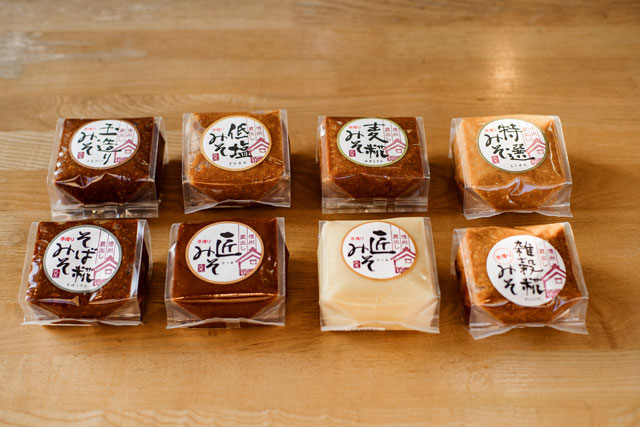
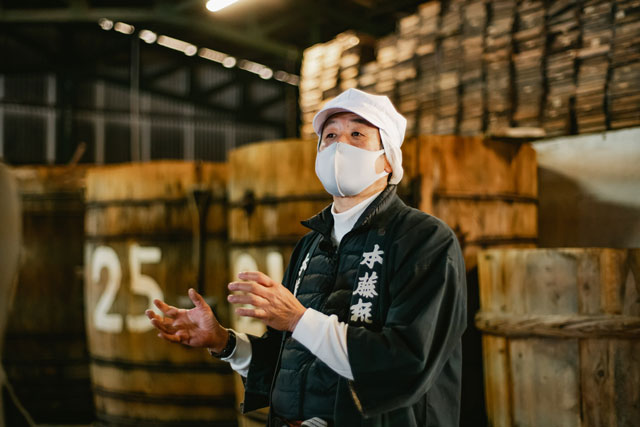
Complex flavors of miso that only wooden vats can produce
This balance varies greatly depending on the technique and environment, so adjusting it and preparing the optimum malt for the type of miso to be made is the highlight of our skills.
Currently, at Koujiya Hondo Jyozo, we carefully select and use six to seven types of bacteria. At present, Koujiya Hondo Jyousei carefully selects six to seven types of bacteria to prepare the optimum malt for its miso production. Using the techniques and experience that we have cultivated as a malt shop for generations, the carefully cultivated, meticulously selected malt hardens inside a wooden box called a morobuta, and looks like a beautiful, fine-textured cotton candy.
It is then mixed with steamed soybeans, prepared, and aged in wooden vats that have been handed down from generation to generation.
This wooden vat and aging method are the true essence of Kojiya Hondo Brewing. The greatest feature of the wooden vats that have been used for many years is that “brewer’s bacteria” live in the air bubbles of the vats. This unique and useful bacteria, literally nurtured in the vat, is what gives miso its unique flavor, aroma, and complexity during the fermentation process. When using wooden vats, all finished miso products must be manually excavated and maintained. While an increasing number of miso breweries are discontinuing the use of wooden vats due to such human resource issues, Mr. Hondo insists on using wooden vats. This has a significant impact on his other passion, natural brewing. Wooden vats are ideal for this brewing method, which encourages natural fermentation and slow maturation without the use of heat, because they conduct little heat and breathe on their own. Combined with the environment of Suzaka City, which has a wide range of temperatures and is ideal for fermentation and maturation, which is important for miso making, the local advantage is utilized to produce a mild miso with a deep sweetness and a salty flavor. This naturally brewed miso is made in wooden vats, a rarity in Japan. There are many things that can be simplified, but because it is a small family-run miso shop, Mr. Hondo says that no matter how hard the work may be, he will stick to the production method he believes in, and use only the best ingredients to make a truly high-quality product.
